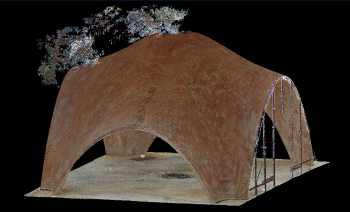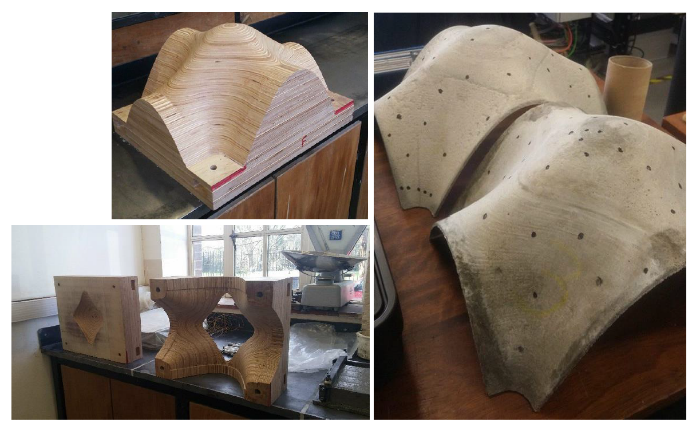The Seismic Performance of Sustainable Tile-Vaulted Structures
Principal Investigator: Eftychia Dichorou
Trimble contacts: Maria Cotone, Helder Caetano and John Stephenson
Project Description:
 When both, architectural and sustainability demands govern the design of structures, contemporary tile vaulting may provide a viable alternative. However, it is necessary to ensure the safety of this building typology in seismic regions. At present, there is a lack of knowledge in understanding the seismic behaviour of tile vaults. The combined complexity of their three-dimensional curving geometry, the nonlinear brittle behaviour of masonry, the variable nature of earthquake loading and the geometric imperfections that are likely to arise due to construction which uses no formwork, makes it an inherently difficult problem to solve.
When both, architectural and sustainability demands govern the design of structures, contemporary tile vaulting may provide a viable alternative. However, it is necessary to ensure the safety of this building typology in seismic regions. At present, there is a lack of knowledge in understanding the seismic behaviour of tile vaults. The combined complexity of their three-dimensional curving geometry, the nonlinear brittle behaviour of masonry, the variable nature of earthquake loading and the geometric imperfections that are likely to arise due to construction which uses no formwork, makes it an inherently difficult problem to solve.
This research aims to establish a more robust understanding of the seismic behaviour of complex-shaped tile vaults using computational and experimental modelling. Investigations particularly focus on geometric imperfections and how these may affect the load-carrying capacity of tile vaults in an earthquake. To perform these investigations numerically, the development of a robust tool that will efficiently generate input for FE modelling, is within the scope of this research. The imperfection fields generated using this tool, are based on real imperfection measurements, taking into account the dependency of imperfections on the construction method employed.
To assess the reliability of numerical models, tilting-table tests were performed on scale-model variants of Norman Fosters’ droneport prototype. The mortar-made scale-models were tested under quasi-static loads using the centrifuge equipment, available at the Schofield Centre. The tests were useful in obtaining the failure mechanisms formed and the maximum lateral acceleration that could be sustained by the scale-models, prior to collapse. Before testing, a laser scanner was used to quantify the level of imperfections present on the scale-models. By doing so, the effect of initial imperfections on their seismic response could be determined.
In the new series of experimental tests, the dynamic response of tile vaults will be examined. The tests will be performed on a shaking table either in the centrifuge or laboratory and the dimensions of the scale-models are to be decided. The scale-models will initially be subjected to low intensity vibration, allowing determination of their natural frequency. Subsequent excitations imposed on the scale-models, that are representative of a real earthquake ground shaking will enable determination of the acceleration levels and the corresponding displacements experienced by the structures before collapse. Comparison of the two different testing approaches will provide useful information regarding the ability of common design practices to predict the dynamic response of tile vaults.

